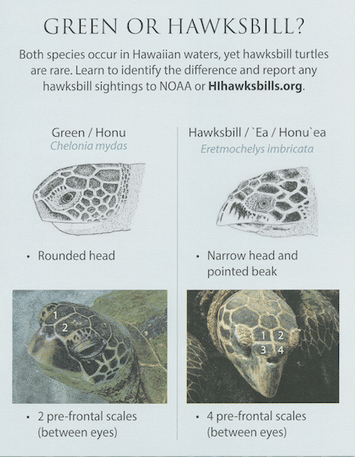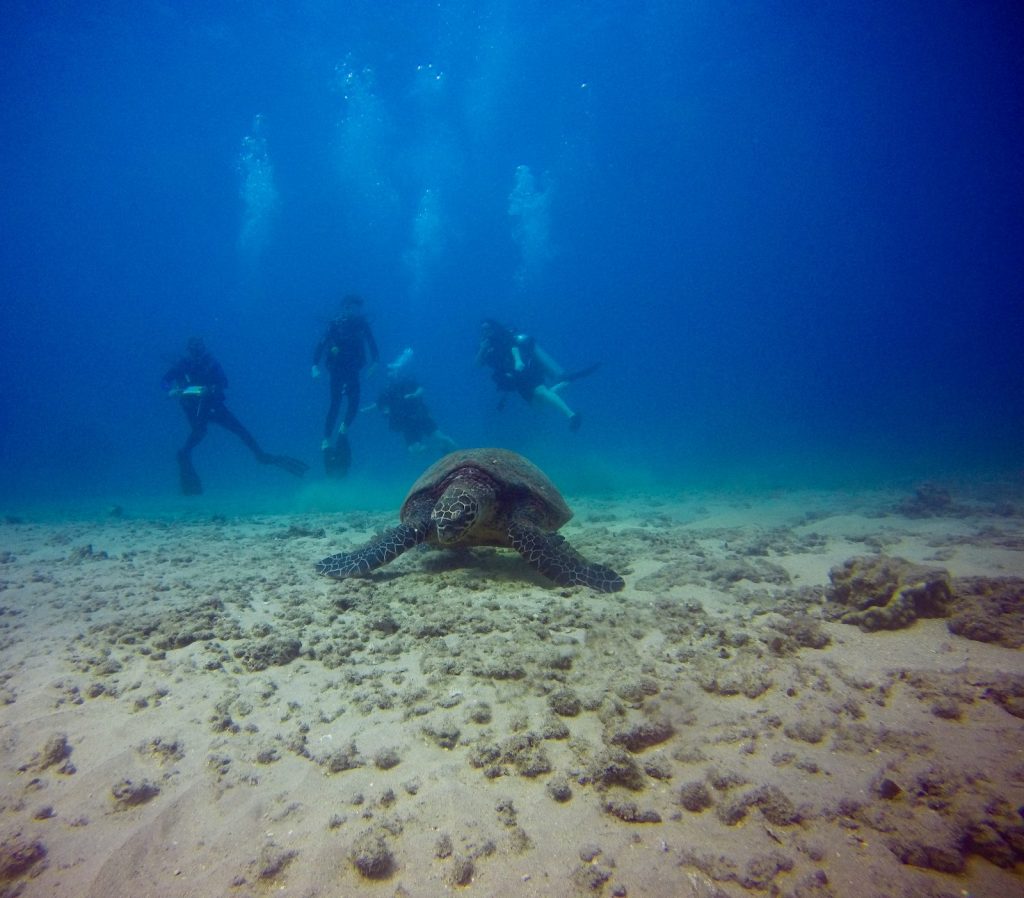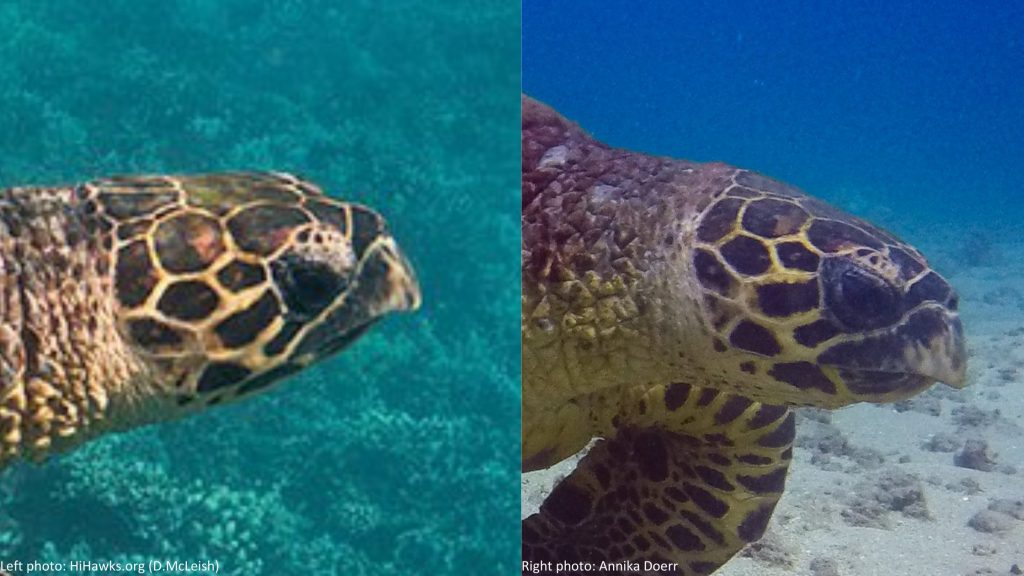By Annika Doerr
MEET ROCKET GIRL!
A Hawaiian hawksbill turtle living on Maui
We scuba diving instructors are lucky enough to encounter sea turtles underwater just about every day on Maui. While there are five species of sea turtle known to Hawaii, only two are seen with regularity: the commonly seen green sea turtle, or honu (that you will most likely encounter on a snorkel or dive), and the less-sighted and “critically endangered” hawksbill turtle, or honu ‘ea. Further, these are the only two species that nest in Hawaii as well.
After one of those ‘special occasion’ dives, where we encountered a honu ‘ea, I was amazed to hear “yeah, that was Rocket Girl” at the surface, and it piqued my curiosity! Who was this “Rocket Girl” and how could I learn more about her? Thanks to the efforts and passion of HI Hawksbill Conservation, and you, Joe Public, our 200 individual honu ‘ea have been identified in Hawaii since the project began in 1998.
Introducing #MUI23, affectionately known as “Rocket Girl” !

“Rocket Girl” munching on some sponges at Kahekili Beach, Maui, 2019. Image: Annika Doerr
Rocket Girl is one of HI Hawksbill’s best documented hawksbills, an adult female that has been photographed since 2007 with current sightings into 2020. She was also part of a special project in 2015 (along with two other turtles, Misty and Barnacle Billy), where high-tech transmitters where applied to her carapace (shell). The device recorded their dive data and provided location information. All transmitters were successfully removed in 2017 and we are excitedly awaiting the results of the study.
So how do you know what kind of turtle you’re looking at?

Image source: Hihawksbills.org
For me, the easiest way to spot a hawksbill from a green turtle is by looking at their faces.
Hawksbills have a uniquely beak-like mouth where as greens have a more rounded head and smooth mouth.
Green turtles also have adjoining scutes (tiles) on their carapace while hawksbills have tell-tale overlapping scutes .
Counting their pre-frontal scales is also an option.
It’s difficult to tell just by looking if the turtle has been tagged because their tags often become overgrown and near-invisible.
If you are in the water frequently and pay attention you will soon find yourself a master at identifying turtles simply by looking at their overall shape.
What do you do if it is indeed a rare hawksbill turtle?
Take a photo! Send your sighting into HiHawks.org. They will give you information about the turtle you saw and tell you if it has been cataloged.
If you find a “new” turtle (one that has not yet been documented) you get to name it too. How cool! If possible, the most important parts of the turtle to capture for identification are; the cheek, the head from above, or the shell from above.
Below you can see two shots of Rocket Girl’s right cheek. A good way to identify her, as this part of her body is less likely to change or become damaged than, say, her shell.
Please keep in mind that efforts to photograph these hawksbill turtles should never disturb or change their behavior. Please take photos from a safe and respectful distance.

Rocket Girl, Maui, 2019. Image: Annika Doerr
With only about 20 – 25 females nesting annually in the Hawaiian Islands, it is vitally important to keep collecting hawksbill sightings and contributing to the scientific knowledge of this critically endangered species.
The HI Hawksbill Conservation group has been dedicated to advancing the understanding and conservation of these beautiful creatures. Their statewide photo-ID catalog has been a key resource in the identification of Hawaiian hawksbill turtles and has significantly contributed to our local and global knowledge.
As divers, it’s fantastic to have such a wonderful database to draw from! It may come as a surprise to some of you, but these animals have been found to have a territory they reside in – their underwater neighborhood. And so for us, diving the sites regularly, being able to recognize and identify a friend underwater is truly a heart-warming experience.
Find out more about the Hawaii Hawksbill project here.
.
